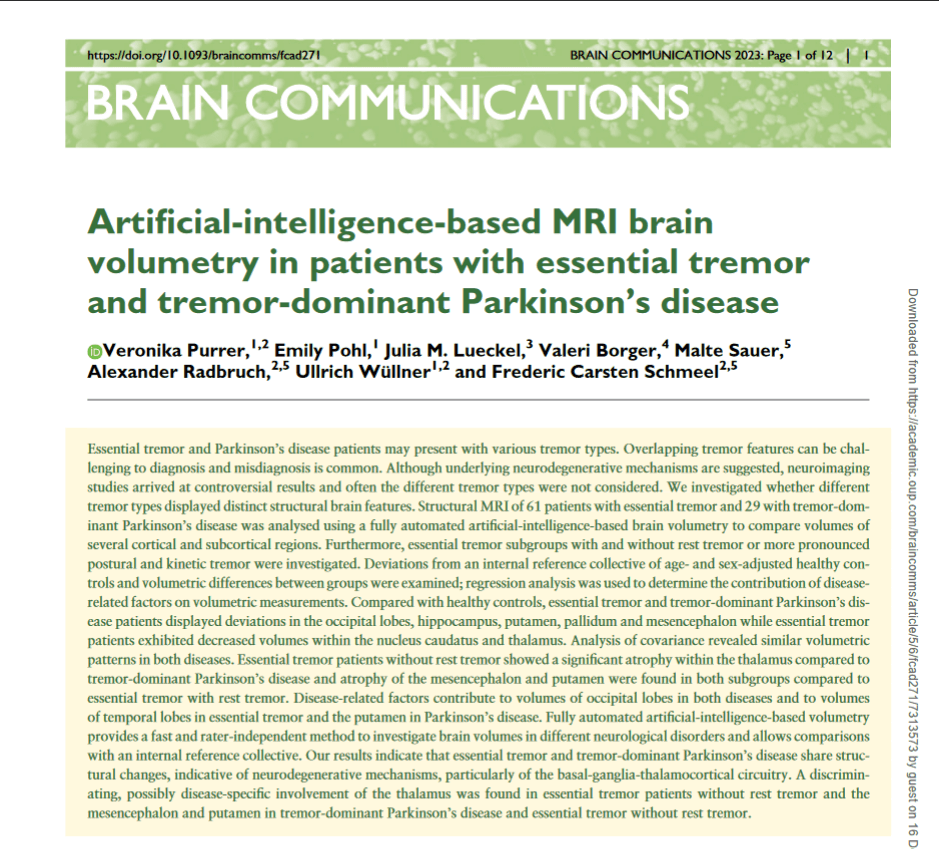AI-based MRI Brain Volumetry in Essential Tremor and Parkinson’s – Journal Club
In this week’s session of the Journal Club , I presented the article “Artificial-intelligence-based MRI Brain Volumetry in Patients with Essential Tremor and Tremor-Dominant Parkinson’s Disease.” This article is from the open-access journal “Brain Communications” affiliated with the Oxford Academic.
Clinically, distinguishing between essential tremor and Parkinson’s disease poses challenges due to significant symptom overlap, often leading to misdiagnosis of the underlying etiology. In addition to the overlap of motor and non-motor symptoms, the increased incidence of tremor-dominant Parkinson’s disease in individuals with a history of essential tremor or a family history of essential tremor supports the relationship between essential tremor and Parkinson’s disease. While the pathophysiology of both diseases is not fully understood, recent evidence points to underlying neurodegenerative mechanisms. Common pathological and neuroimaging findings, alongside clinical patterns, indicate shared pathophysiological features, emphasizing the necessity of reliable measurements using fully automated, quantitative, software-based objective MRI assessment methods in potentially affected brain regions.
During this session of the Journal Club, we discussed the potential of automatic artificial intelligence-based brain MRI volumetry to capture changes in the brains of patients with essential tremor and Parkinson’s disease. The focus was on the discriminative value of the obtained brain volume changes in distinguishing between essential tremor and Parkinson’s disease.
Automatic artificial intelligence-based brain MRI volumetry can provide a rapid, researcher-independent, and highly reproducible tool. This method also holds promise as an effective approach in volumetric studies of essential tremor and Parkinson’s disease. Sharing the contributions of artificial intelligence to advancements in the field of medicine with STAP Academy members and emphasizing the significance of implementing AI-based solutions in the practice for the diagnosis, treatment, and prognosis of patients was a pleasure for me.
Guest Author: Hatice Gokcenur Kicirli, MD
Dr. Kicirli is a 2023 graduate of Gazi University Faculty of Medicine. She is interested in the fields of neuroradiology and artificial intelligence. Enjoys integrating life with music.

